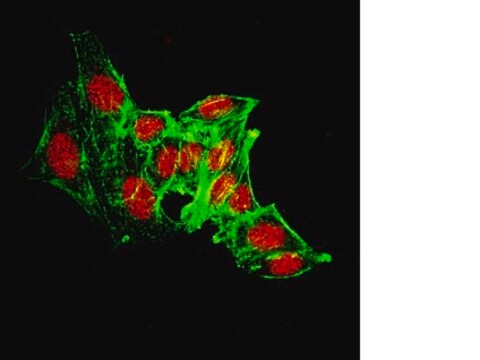1.04366
n-Heptane
for spectroscopy Uvasol®
Synonim(y):
Heptane
About This Item
83 mmHg ( 37.7 °C)
Polecane produkty
gęstość pary
3.5 (vs air)
Poziom jakości
ciśnienie pary
40 mmHg ( 20 °C)
83 mmHg ( 37.7 °C)
Próba
≥99.3% (GC)
Formularz
liquid
temp. samozapłonu
433 °F
siła działania
>5000 mg/kg LD50, oral (Rat)
>2000 mg/kg LD50, skin (Rabbit)
granice wybuchowości
7 %
charakterystyka ekologicznej alternatywy
Safer Solvents and Auxiliaries
Learn more about the Principles of Green Chemistry.
sustainability
Greener Alternative Product
metody
UV/Vis spectroscopy: suitable
zanieczyszczenia
≤0.0001 meq/g Acidity
≤0.0002 meq/g Alkalinity
≤0.005% Water
pozostałość po odparowaniu
≤0.0002%
kolor
APHA: ≤10
przepuszczalność
200 nm, ≥20%
210 nm, ≥55%
220 nm, ≥80%
228 nm, ≥90%
245 nm, ≥98%
współczynnik refrakcji
n20/D 1.387 (lit.)
bp
98 °C (lit.)
mp
−91 °C (lit.)
temp. przejścia
flash point -4 °C
rozpuszczalność
0.05 g/L
gęstość
0.684 g/mL at 25 °C (lit.)
absorpcja UV
λ: 200 nm Amax: ≤0.70
λ: 210 nm Amax: ≤0.26
λ: 220 nm Amax: ≤0.10
λ: 228 nm Amax: ≤0.05
λ: 245 nm Amax: ≤0.01
kategoria ekologicznej alternatywy
temp. przechowywania
2-30°C
ciąg SMILES
CCCCCCC
InChI
1S/C7H16/c1-3-5-7-6-4-2/h3-7H2,1-2H3
Klucz InChI
IMNFDUFMRHMDMM-UHFFFAOYSA-N
Szukasz podobnych produktów? Odwiedź Przewodnik dotyczący porównywania produktów
Opis ogólny
Zastosowanie
- Cloning, Expression, Characterization and Immobilization of a Recombinant Carboxylesterase from the Halophilic Archaeon, Halobacterium salinarum NCR-1.: This study involves the characterization and immobilization of a recombinant carboxylesterase using n-Heptane as a solvent in the enzyme activity assays, highlighting its potential applications in biocatalysis and industrial processes (Ortega-de la Rosa et al., 2024).
- Biomonitoring of volatile organic compounds and organophosphorus flame retardants in commercial aircrews after "fume and smell events".: This research employs n-Heptane in analytical methods for detecting volatile organic compounds, underlining its importance in environmental health studies and air quality monitoring (Weiss et al., 2024).
- Exploring Deactivation Reasons of Biomass-Based Phosphorus-Doped Carbon as a Metal-Free Catalyst in the Catalytic Dehydroaromatization of n-Heptane.: This article examines the deactivation of catalysts in the dehydroaromatization process of n-Heptane, providing insights into catalyst design and optimization for chemical synthesis (Yu et al., 2024).
- Reversible solvent interactions with UiO-67 metal-organic frameworks.: The study explores the interactions of n-Heptane with metal-organic frameworks, demonstrating its application in materials science and solvent recovery processes (Goodenough et al., 2024).
- Capillary electrokinetic chromatography for chiral separation of potential SARS-CoV-2 3CL protease inhibitors.: This research uses n-Heptane in capillary electrokinetic chromatography for the chiral separation of pharmaceutical compounds, emphasizing its role in drug development and analytical chemistry (Brier et al., 2024).
Komentarz do analizy
Evaporation residue: ≤ 0.0002 %
Water: ≤ 0.005 %
Color: ≤ 10 Hazen
Acidity: ≤ 0.0001 meq/g
Alkalinity: ≤ 0.0002 meq/g
Fluorescence (as quinine at 254 nm): ≤ 1.0 ppb
Fluorescence (as quinine at 365 nm): ≤ 1.0 ppb
Transmission (at 200 nm): ≥ 20 %
Transmission (at 210 nm): ≥ 55 %
Transmission (at 220 nm): ≥ 80 %
Transmission (at 228 nm): ≥ 90 %
Transmission (from 245 nm): ≥ 98 %
Absorbance (at 200 nm): ≤ 0.70
Absorbance (at 210 nm): ≤ 0.26
Absorbance (at 220 nm): ≤ 0.10
Absorbance (at 228 nm): ≤ 0.05
Absorbance (from 245 nm): ≤ 0.01
Inne uwagi
Informacje prawne
produkt powiązany
Hasło ostrzegawcze
Danger
Zwroty wskazujące rodzaj zagrożenia
Zwroty wskazujące środki ostrożności
Klasyfikacja zagrożeń
Aquatic Acute 1 - Aquatic Chronic 1 - Asp. Tox. 1 - Flam. Liq. 2 - Skin Irrit. 2 - STOT SE 3
Organy docelowe
Central nervous system
Kod klasy składowania
3 - Flammable liquids
Klasa zagrożenia wodnego (WGK)
WGK 2
Temperatura zapłonu (°F)
24.8 °F
Temperatura zapłonu (°C)
-4 °C
Certyfikaty analizy (CoA)
Poszukaj Certyfikaty analizy (CoA), wpisując numer partii/serii produktów. Numery serii i partii można znaleźć na etykiecie produktu po słowach „seria” lub „partia”.
Masz już ten produkt?
Dokumenty związane z niedawno zakupionymi produktami zostały zamieszczone w Bibliotece dokumentów.
Nasz zespół naukowców ma doświadczenie we wszystkich obszarach badań, w tym w naukach przyrodniczych, materiałoznawstwie, syntezie chemicznej, chromatografii, analityce i wielu innych dziedzinach.
Skontaktuj się z zespołem ds. pomocy technicznej








